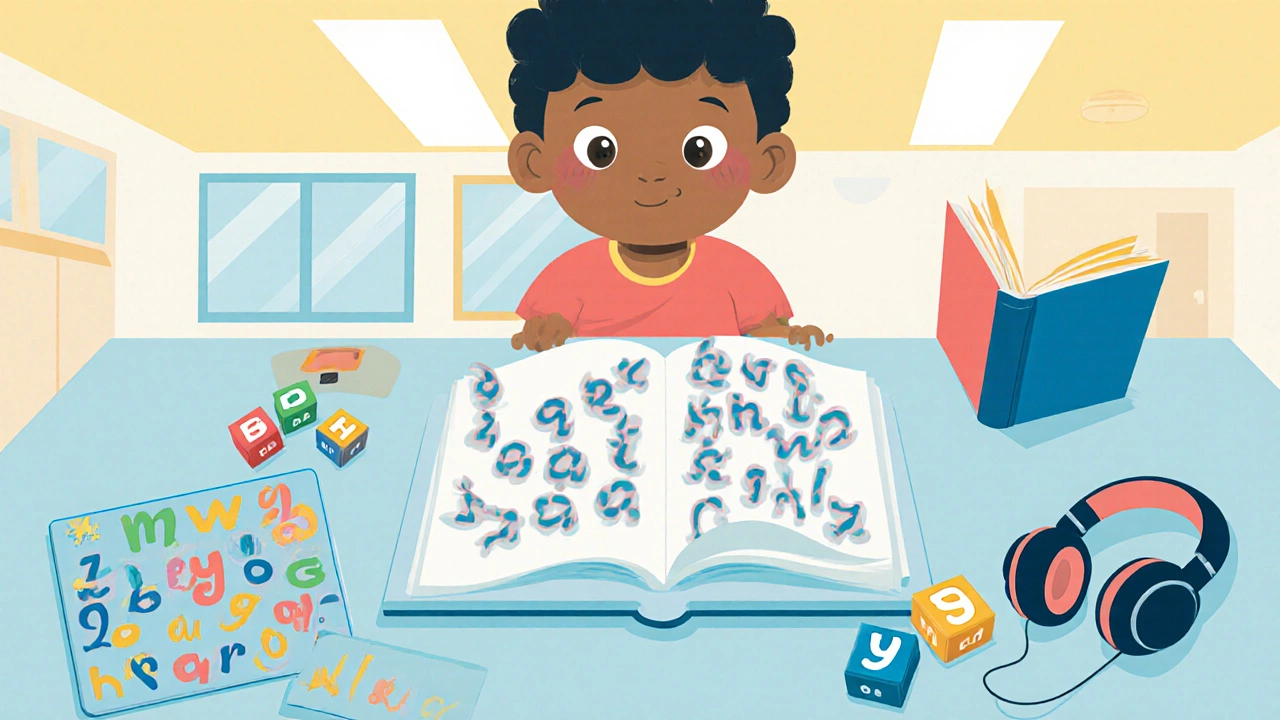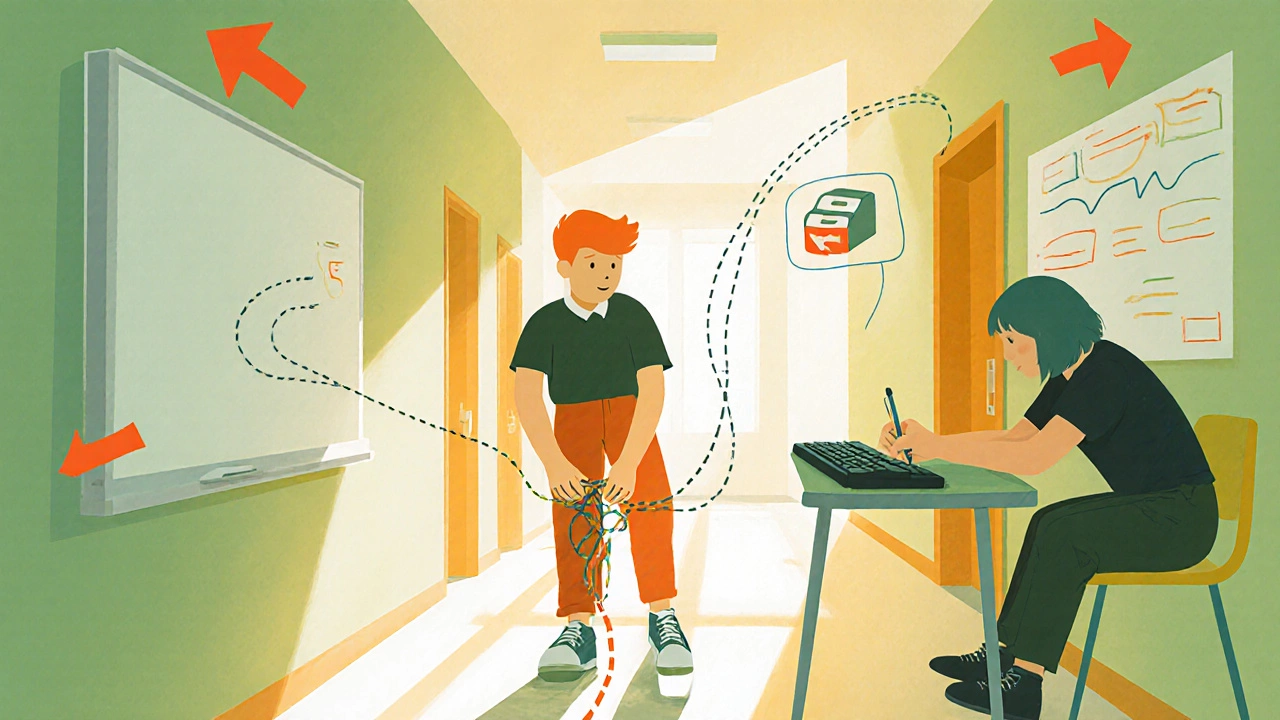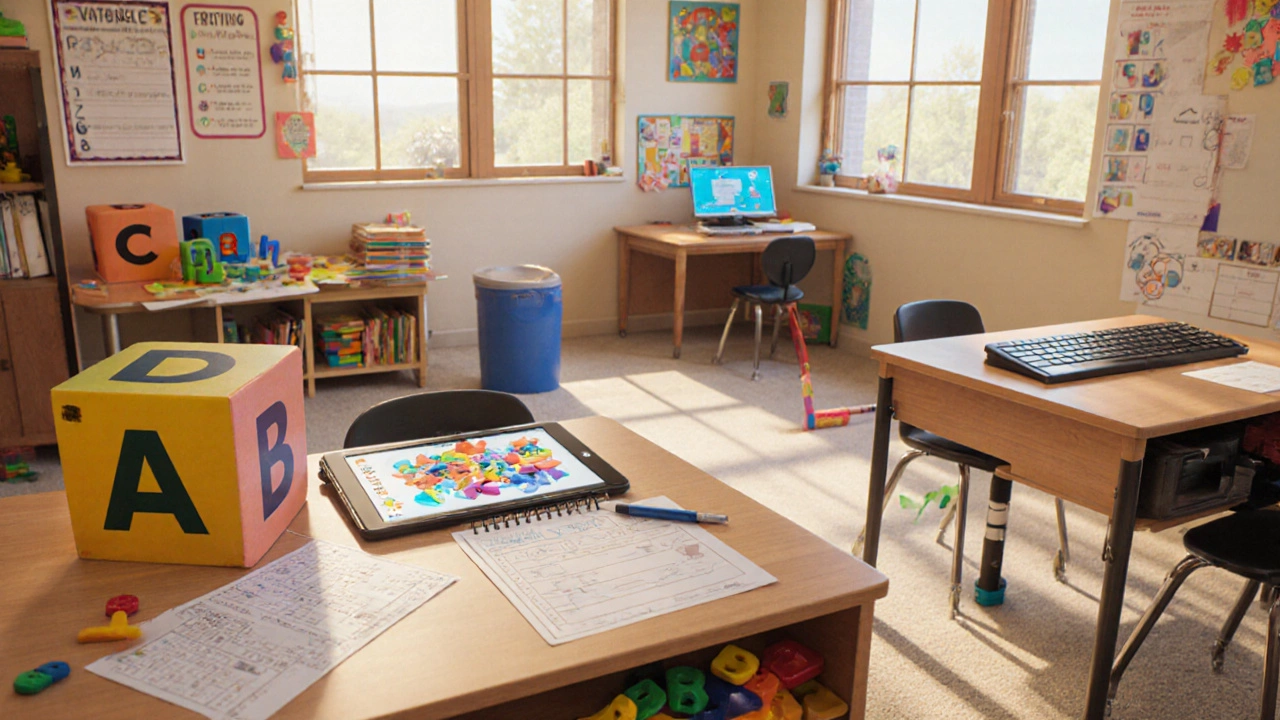Learning Disability Symptom Checker
Symptom Assessment Tool
Select symptoms your child experiences. This tool helps identify potential learning disabilities but is not a diagnostic tool. Always consult a professional for evaluation.
When a child struggles with reading, writing, math, or coordination, the first question many parents ask is “what’s going on?” The answer often points to one of the four D’s of learning disabilities - dyslexia, dysgraphia, dyscalculia, and dyspraxia. Knowing the hallmark signs, why they happen, and how schools can support each condition makes the difference between endless frustration and steady progress.
What the "Four D's" Actually Mean
Four D's of Learning Disabilities refers to the four most common specific learning disorders that start with the letter D. They each affect a different academic or motor skill set, but they share a common thread: the brain processes information differently than typical peers. Understanding each D as a distinct condition helps educators design targeted interventions instead of applying a one‑size‑fits‑all approach.
Dyslexia: The Reading Challenge
Dyslexia is a neuro‑biological condition that makes decoding written language difficult. Children with dyslexia often read slowly, mix up letters that look alike, and struggle to spell even simple words.
- Key signs: frequent spelling errors, trouble rhyming, avoidance of reading for pleasure, and a noticeable gap between oral vocabulary and written output.
- Why it happens: brain imaging studies show reduced activity in the left‑hemisphere regions responsible for phonological processing.
- Effective strategies: multisensory programs like Orton‑Gillingham, explicit phonics instruction, and the use of audiobooks paired with text.
Dysgraphia: When Writing Gets Stuck
Dysgraphia affects the fine‑motor skills needed for handwriting and the organization of written thoughts. Kids may produce illegible script, omit letters, or display chaotic page layouts.
- Key signs: poor spacing, inconsistent letter size, difficulty translating ideas onto paper, and frequent fatigue during writing tasks.
- Why it happens: disruptions in the brain’s motor planning areas, often coupled with weaknesses in visual‑spatial processing.
- Effective strategies: occupation‑therapy‑guided hand‑strengthening exercises, use of graphic organizers, and keyboard‑first assignments with speech‑to‑text software.
Dyscalculia: The Math Roadblock
Dyscalculia is the math‑specific counterpart of dyslexia. It hampers the ability to understand numbers, perform calculations, and grasp mathematical concepts.
- Key signs: confusion with place value, difficulty memorising basic facts, anxiety around timed tests, and a tendency to use “guess‑and‑check” rather than systematic problem solving.
- Why it happens: atypical activation in the intraparietal sulcus, the brain region that processes numerical magnitude.
- Effective strategies: concrete manipulatives (cubes, number lines), visual‑step‑by‑step problem breakdowns, and frequent low‑stakes practice to build fluency.
Dyspraxia: Coordination Meets Cognition
Dyspraxia, also known as Developmental Coordination Disorder (DCD), impacts motor planning and execution. It can affect everything from handwriting to sports participation.
- Key signs: clumsiness, difficulty tying shoelaces, inconsistent fine‑motor tasks, and trouble with sequencing actions.
- Why it happens: neurological pathways that link intention to movement are under‑developed, leading to delayed motor skill acquisition.
- Effective strategies: task‑specific coaching, visual‑motor integration activities, and the use of assistive technology such as adaptive keyboards.

How Schools Identify the Four D's
Identification typically starts with classroom observations, followed by formal assessments. In Australia, the National Assessment Program - Literacy and Numeracy (NAPLAN) can flag discrepancies, but a comprehensive evaluation often involves a speech‑language therapist, occupational therapist, and a specialist psychologist.
Once a diagnosis is confirmed, the child's Individualised Education Program (IEP) outlines specific goals, accommodations, and the responsible support staff. A well‑written IEP is the bridge between diagnosis and daily classroom practice.
Practical Classroom Tips for Each D
| Learning Disability | Core Difficulty | Classroom Accommodation | Assistive Tool |
|---|---|---|---|
| Dyslexia | Decoding written language | Provide audiobooks, allow extra time for reading tasks | Text‑to‑speech software (e.g., NaturalReader) |
| Dysgraphia | Handwriting and organization | Use graphic organizers, permit typed assignments | Speech‑to‑text apps, ergonomic pens |
| Dyscalculia | Number sense and calculation | Offer manipulatives, break problems into steps | Virtual math manipulatives (e.g., Khan Academy) |
| Dyspraxia | Motor planning and coordination | Provide extra time for physical tasks, use visual cues | Adaptive keyboards, motion‑tracking apps |
These accommodations are not “special treatment”; they are equity‑based adjustments that level the playing field. When teachers embed them into everyday lessons, all students benefit from clearer instructions and richer multimodal content.
Common Misconceptions to Debunk
- It’s not about intelligence. A child with dyslexia can have an IQ well above average. The challenge is specific to language processing.
- It’s not just “bad habits”. Repeated failure to master a skill isn’t laziness; it’s a neurological difference that needs targeted support.
- Early intervention matters. The earlier the support, the less the academic gap widens. Delaying helps the problem compound.
Where to Find Help in Adelaide and Beyond
Parents can start with their child's school liaison officer, who can arrange assessments through local services such as the South Australian Department for Education’s Learning Support Teams. Private options include specialist clinics like Adelaide Learning Disability Centre and the Australian Speech Pathology Association. Many schools also partner with university‑based clinics for low‑cost evaluations.
Next Steps for Parents and Educators
- Observe and record. Keep a simple log of situations where the child struggles (e.g., “third‑grade math worksheet, 10‑minute completion time”).
- Request a formal evaluation. Use the school’s “Special Education Request Form” or contact a private diagnostician.
- Develop an IEP. Collaborate with teachers, therapists, and the child to set realistic, measurable goals.
- Implement classroom accommodations. Use the quick‑reference table above as a checklist.
- Monitor progress. Review the IEP every term, adjust strategies, and celebrate incremental gains.
Remember, the goal isn’t to “cure” the D’s - it’s to empower the learner with tools that make the classroom a place where they can thrive.

How can I tell if my child has one of the four D’s?
Look for consistent patterns: difficulty reading aloud, messy handwriting, repeated math errors, or clumsy motor tasks. Document these observations and discuss them with the school’s learning support coordinator, who can arrange a formal assessment.
Is dyslexia the same as poor reading skills?
No. Poor reading can stem from lack of practice or motivation, but dyslexia is a neurologically based difference in how the brain processes phonemes. It persists despite adequate instruction.
Can technology replace teacher support for these disabilities?
Technology is a powerful supplement-text‑to‑speech, speech‑to‑text, and adaptive keyboards can reduce barriers. However, skilled teachers still provide the scaffolding, feedback, and personal interaction that technology alone can’t deliver.
What is the difference between dysgraphia and dyspraxia?
Dysgraphia is a specific writing disorder-trouble forming letters and organizing text. Dyspraxia is broader, affecting overall motor planning, so it can also impact handwriting, sports, and daily tasks like dressing.
How often should an IEP be reviewed?
Most schools require a formal review at least once a year, but quarterly check‑ins are recommended when a child is newly diagnosed or when major strategy changes occur.

